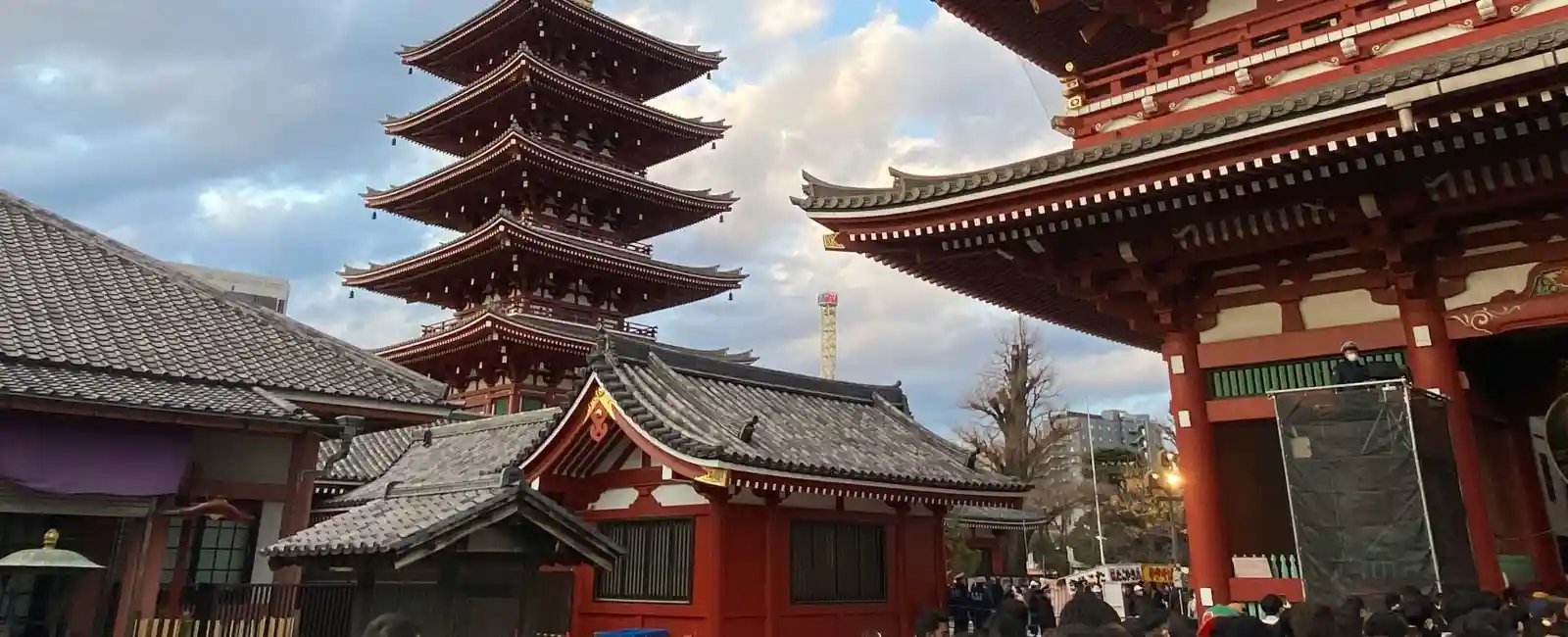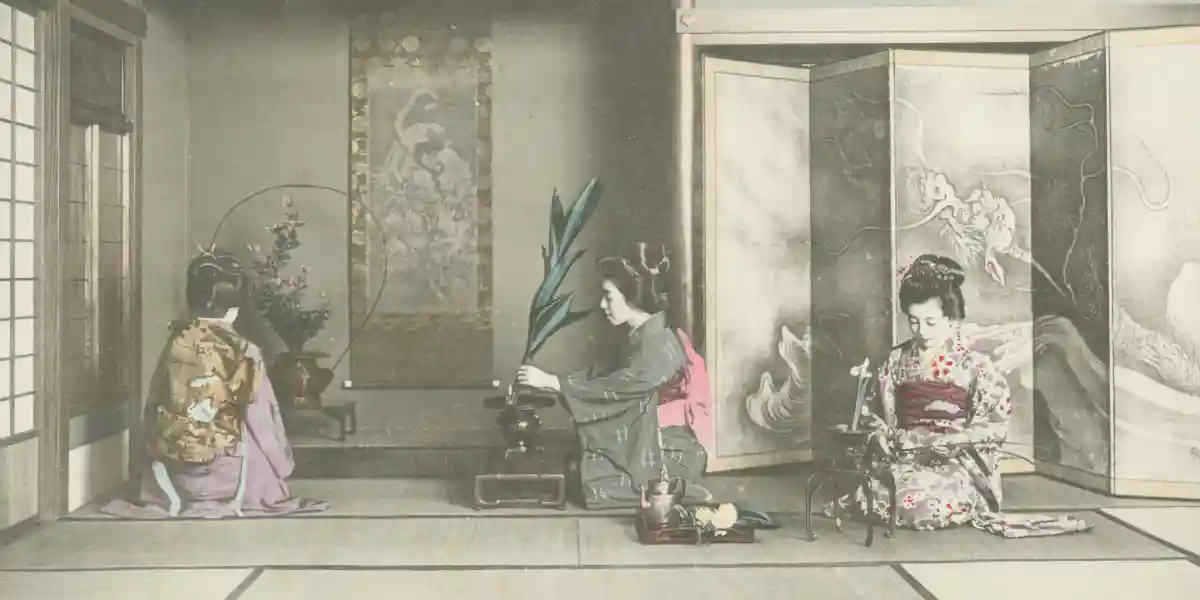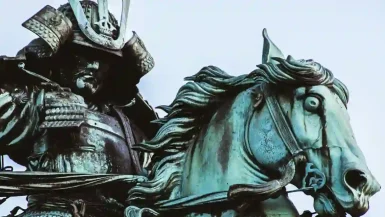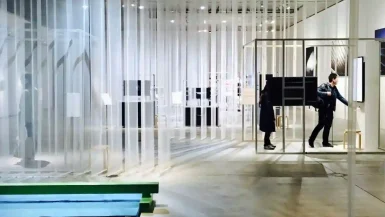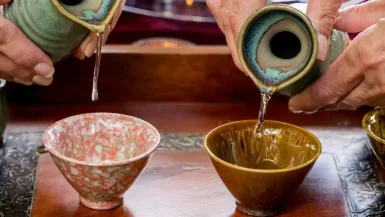The Edo Period in Japan, named after the city of Edo (modern-day Tokyo), which served as the seat of power for the Tokugawa shogunate, marks a pivotal era in the country’s history. The period is called the Edo Period because Edo became the political and cultural center of Japan during this time, symbolizing the shogunate’s authority and the era’s stability. Under Tokugawa Ieyasu, who established his government in Edo. The city rapidly grew into a bustling metropolis and the de facto capital of Japan. This era of centralized governance allowed Edo to flourish, becoming a hub of economic activity, cultural development, and urban growth. The name “Edo Period” reflects the physical location of the shogunate’s power. It also reflects the profound influence this city had on shaping the nation’s identity during these transformative years.
The Edo Period in Japan is spanning from 1603 to 1868. It marks a significant era in Japanese history, known for its long-lasting peace, cultural blossoming, and strict social order. During these 265 years, Japan transformed from a war-torn nation into a unified and culturally rich society under the rule of the Tokugawa shogunate. This period, often referred to as the Tokugawa period. In this post, we will explore various aspects of the Edo Period in Japan. The post is offering detailed insights into its political structure, societal norms, cultural developments, and lasting legacy.
The Rise of the Tokugawa Shogunate
The Edo Period in Japan began with the rise of Tokugawa Ieyasu, who established the Tokugawa shogunate after his victory at the Battle of Sekigahara in 1600. This decisive battle ended years of civil war and set the stage for the Tokugawa family’s control over Japan. Ieyasu’s strategic diplomacy and military prowess allowed him to consolidate power, ultimately leading to his appointment as shogun in 1603. The Edo Period in Japan thus commenced, characterized by a centralized feudal system that ensured the shogunate’s dominance over the daimyo, or regional lords. By requiring the daimyo to spend alternate years in Edo (now Tokyo) under the policy of sankin-kōtai, Ieyasu effectively curbed their power and maintained stability across the nation.
Social Structure and the Class System
The Edo Period in Japan witnessed the establishment of a rigid social hierarchy that influenced every aspect of life. The Tokugawa shogunate implemented a strict four-tiered class system known as shi-no-ko-sho. At the top of this hierarchy were the samurai, who served as warriors and administrators. They held the most power and privilege, but they were also bound by the code of Bushido, emphasizing loyalty, honor, and duty. Below the samurai were the peasants, who formed the majority of the population. They were responsible for farming and producing food. It was making them vital to the economy but restricted in their freedom and rights.
Artisans and craftsmen occupied the third tier. They were contributing to the cultural and economic landscape by creating goods such as pottery, textiles, and tools. Merchants, although wealthy, occupied the bottom of the social ladder because people perceived them as profiting from the work of others. The social order during the Edo Period in Japan remained rigid. The period gave little opportunity for movement between classes, reinforcing the shogunate’s control over society.
Economic Growth and Urbanization
The Edo Period in Japan was marked by significant economic growth, driven by a flourishing agricultural sector, the expansion of trade, and the development of urban centers. Agriculture remained the backbone of the economy, with rice serving as the standard currency and the primary measure of wealth. The sankin-kōtai system, which required daimyo to maintain residences in Edo, spurred the growth of the city as a political and economic hub. This system also led to the development of extensive road networks, facilitating trade and communication across the country. As a result, Edo became one of the largest cities in the world by the 18th century. It had a bustling population and a vibrant market economy. Other cities, such as Osaka and Kyoto, also flourished as centers of commerce and culture during this period.
Isolationist Policies and Foreign Relations
A defining feature of the Edo Period in Japan was the implementation of the sakoku (closed country) policy, which severely restricted foreign trade and contact with the outside world. This isolationist approach, initiated by the shogunate in the 1630s, was intended to prevent the spread of Christianity and to maintain social order by limiting foreign influence. Under sakoku, Japan only allowed limited trade with the Dutch, Chinese, and Koreans, conducted through the port of Nagasaki. While this policy fostered internal stability and cultural development, it also isolated Japan from the rapid technological and political changes occurring in the rest of the world. The Edo Period in Japan, therefore, represents a unique chapter in global history, where a nation deliberately chose isolation to preserve its traditions and social structure.
The Decline of the Tokugawa Shogunate
As the Edo Period in Japan progressed into the 19th century, the once-stable shogunate began to face challenges that ultimately led to its downfall. Economic difficulties, such as crop failures and inflation, placed immense strain on the lower classes, leading to unrest and uprisings. The rigid social structure, which had maintained order for centuries, started to crack under the pressure of these economic hardships. Additionally, the arrival of Western powers, particularly the United States, with Commodore Matthew Perry’s expedition in 1853, forced Japan to confront the realities of global diplomacy and military technology. The signing of unequal treaties, which opened Japan to foreign trade under unfavorable terms, further weakened the shogunate’s authority. These events culminated in the Meiji Restoration of 1868. It marked the end of the Edo Period in Japan and the beginning of a new era of modernization and international engagement.
The Lasting Legacy of the Edo Period in Japan
The Edo Period in Japan, despite its eventual decline, left a profound legacy that continues to shape the country today. The social and political systems established during this era laid the groundwork for Japan’s transition into the modern age. The cultural achievements of the Edo Period, spanning art, theater, literature, and architecture, continue to shape Japanese identity and receive celebration both within Japan and across the world. The economic and infrastructural developments of this period contributed to Japan’s rapid modernization in the late 19th and early 20th centuries. The Edo Period in Japan, therefore, represents a critical chapter in the nation’s history.
Edo Period Influence in Modern Japan
The influence of the Edo Period in Japan is deeply ingrained in various aspects of modern Japanese society, culture, and architecture. This historical era, though centuries past, continues to shape Japan’s identity in numerous visible ways. From the preservation of traditional arts to the layout of modern cities, the Edo Period’s legacy is both enduring and pervasive.
Urban planning
One of the most prominent areas where the Edo Period’s influence is visible today is in Japan’s urban planning and architecture, particularly in cities like Tokyo and Kyoto. The city of Tokyo, originally known as Edo, retains its historical roots in areas such as Asakusa. Here you can visit the Sensoji Temple. This temple, founded during the Edo Period, remains a central attraction, drawing millions of visitors annually. The narrow streets and traditional wooden buildings in areas like Yanaka also reflect the Edo aesthetic. They offer a glimpse into the past amidst the bustling modern cityscape. Kyoto also preserves its Edo heritage through its numerous temples, shrines, and traditional machiya townhouses.
Ikebana and Ukiyo-e
In the realm of cultural practices, the Edo Period in Japan continues to resonate through traditional arts like tea ceremonies, flower arranging (ikebana), and ukiyo-e woodblock prints. The tea ceremony, refined during the Edo Period, is still widely practiced today, emphasizing the same principles of harmony, respect, purity, and tranquility that were valued centuries ago. Flower arranging, or ikebana, also remains a popular art form, taught and practiced throughout Japan with techniques and philosophies rooted in Edo traditions. Moreover, ukiyo-e prints, which gained immense popularity during the Edo Period, continue to inspire contemporary artists and designers. The vivid depictions of landscapes, kabuki actors, and scenes from daily life created by masters like Hokusai and Hiroshige have become iconic symbols of Japanese culture worldwide.
Culinary traditions
The Edo Period’s influence is also evident in Japan’s culinary traditions, particularly in the popularity of foods that were developed or popularized during this era. Sushi, which evolved from a method of preserving fish in fermented rice during the Edo Period, has become a globally recognized dish synonymous with Japanese cuisine. Similarly, tempura, introduced to Japan during the Edo Period and adapted to local tastes, remains a staple in Japanese diets. Culinary practices that originated in the bustling cities and markets of the Edo Period thrive in modern Japan, connecting the past with the present through flavors and techniques passed down through generations.
Festivals
The Edo Period in Japan played a crucial role in preserving traditional arts and crafts, with many still practiced today. People refined art forms such as the tea ceremony, ikebana (flower arranging), and noh theater during this era. These practices, passed down through generations, reflect the era’s deep appreciation for aesthetics, discipline, and mindfulness. The commitment to these traditional arts highlights how the values and customs established during the Edo Period remain relevant and cherished in modern Japan. The Edo Period in Japan thus serves as a bridge between the past and present, keeping the spirit of historical Japan alive in contemporary culture.
Terakoya
Moreover, the Edo Period’s influence extends to the modern Japanese legal and educational systems. The Tokugawa shogunate’s establishment of a centralized government and the codification of laws during the Edo Period laid the foundation for Japan’s modern legal system. Similarly, the emphasis on education and literacy during the Edo Period, which saw the rise of terakoya (temple schools) for commoners, contributed to Japan’s high literacy rates and the value placed on education in contemporary society. The legacy of these Edo Period institutions is evident in Japan’s continued commitment to law, order, and education as pillars of society.
In summary, the Edo Period in Japan continues to influence modern Japanese society in profound and visible ways. Whether through urban landscapes, traditional arts, culinary practices, social customs, or institutional legacies, the echoes of the Edo Period remain deeply embedded in the fabric of Japan’s cultural and historical identity. This enduring influence not only connects contemporary Japan with its rich past but also enriches the experience of those who visit or study the country today, providing a living link to an era that shaped the nation’s destiny.
Conclusion
The influence of the Edo Period in Japan extends far beyond its historical boundaries, permeating modern Japanese culture, art, and societal values. This era’s emphasis on stability and social harmony laid the groundwork for the disciplined and orderly society that Japan is known for today. The cultural innovations of the Edo Period, particularly in areas like ukiyo-e and kabuki, continue to inspire artists and performers both within Japan and around the world. Additionally, the period’s focus on education and literacy contributed to a highly educated populace. It was instrumental in Japan’s rapid modernization during the Meiji era.
The infrastructure developments, such as the expansion of road networks and urban centers supported economic growth during the Edo Period. These conditions also facilitated the swift transformation of Japan into a modern nation-state. Moreover, the Edo Period’s policies of isolation helped preserve Japan’s cultural heritage. It allowed Japan to emerge with a strong, distinct national identity. The lessons learned from the Edo Period in Japan, including the balance between tradition and change, continue to resonate in contemporary Japanese society.
In essence, the Edo Period was not just a historical phase. This was a foundational era that set the stage for Japan’s evolution into the dynamic country it is today. Understanding this period offers invaluable context for anyone seeking to comprehend the complexities of Japan’s past and present. The Edo Period in Japan remains a testament to the enduring power of cultural and political legacy, influencing the nation long after its formal conclusion.
